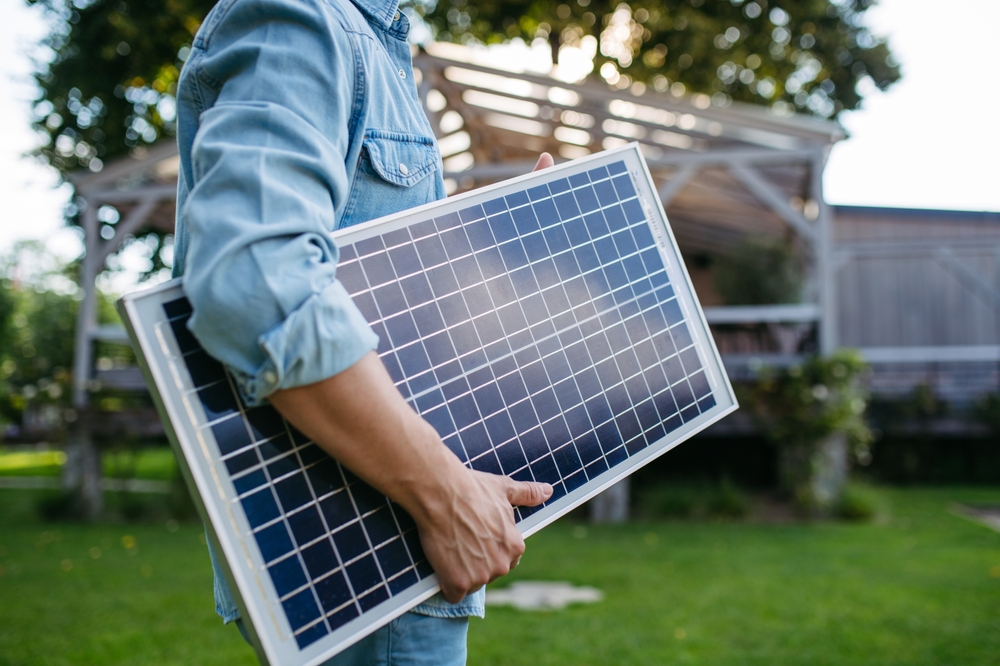
Solar energy is one of the most efficient and eco-friendly power sources available today. With technological advancements, the variety of solar panels on the market has expanded significantly, making it easier for homeowners and businesses to find solutions that meet their needs. Understanding the types of solar panel options available is crucial when choosing the right system for your requirements. This guide explores the main types of solar panels and their key features to help you make an informed decision.
What Are Solar Systems and How These Panels Work?
These cells capture sunlight and generate direct current (DC), which is then converted into alternating current (AC) through an inverter for use in homes and businesses. Solar panels vary in design, material, and efficiency, allowing users to select panels that fit their energy goals and budgets.
Main Types of Solar Panels
Different types of solar panels are designed to cater to specific applications and efficiency levels. Let’s explore the three most common types:
Monocrystalline Solar Panels
Monocrystalline solar panels are the oldest and most widely used type of solar panel.
Key Features:
- High Efficiency: These panels have efficiency rates ranging from 15% to 20%, making them ideal for areas with limited space.
- Durability: They are long-lasting, often accompanied by warranties of 25 years or more.
- Aesthetic Appeal: Their sleek, black appearance enhances the visual appeal of rooftops.
While monocrystalline panels are slightly more expensive, their efficiency and longevity often justify the cost for users seeking maximum performance.
Polycrystalline Solar Panels
They are a cost-effective option, making them a popular choice for budget-conscious consumers.
Key Features:
- Affordable Pricing: Polycrystalline panels are generally cheaper to produce, resulting in lower upfront costs.
- Moderate Efficiency: With efficiency levels ranging from 13% to 16%, these panels work well for larger spaces.
- Distinct Appearance: They have a blue, speckled look due to their manufacturing process.
Although slightly less efficient than monocrystalline panels, they are an excellent choice for larger installations where space is not a constraint.
Thin-Film Solar Panels
Thin-film solar panels are made by layering photovoltaic materials on a base material like glass or plastic. These panels are lightweight and versatile, ideal for unique applications.
Key Features:
- Flexibility: Their lightweight and flexible nature makes them perfect for portable solar systems and curved surfaces.
- Ease of Installation: Thin-film panels are easy to install, reducing labor costs.
- Lower Efficiency: With efficiency rates around 7% to 13%, they are better suited for applications where space is abundant.
Thin-film panels are often used in commercial or industrial settings and in projects requiring a lightweight solar solution.
Comparing Efficiency and Performance
Efficiency is a critical factor when evaluating the types of solar panels. Monocrystalline panels lead in terms of efficiency, followed by polycrystalline and thin-film panels. However, the choice depends on the user’s energy requirements, budget, and available space.
Key Considerations When Choosing a Solar Panel
1. Energy Requirements
Understand your energy needs by analyzing past electricity bills and estimating future consumption. This helps in selecting a panel that meets your power demands effectively.
2. Space Availability
The size of the installation area significantly influences the type of solar panel you should choose. For limited spaces, high-efficiency panels like monocrystalline are ideal.
3. Budget Constraints
While monocrystalline panels offer superior performance, polycrystalline and thin-film panels provide budget-friendly alternatives without compromising reliability.
4. Environmental Factors
Consider the climate and weather conditions in your area. For instance, thin-film panels perform well in low-light conditions, making them suitable for regions with less direct sunlight.
Benefits of Understanding Solar Panel Types
Choosing the right solar panel type ensures:
- Higher Return on Investment: By maximizing energy production and reducing utility bills.
- Environmentally Friendly Choices: Supporting sustainability by using renewable energy sources.
- Enhanced Lifespan: Opting for durable materials that withstand harsh conditions.
Secondary Applications for Solar Panels
Solar panels are not limited to residential and commercial energy needs. They also serve purposes such as:
- Portable Solar Systems: Thin-film panels are commonly used in portable solar chargers and camping gear.
- Solar Farms: Large-scale polycrystalline panel installations supply power to the grid.
- Specialty Installations: Custom applications like powering boats or RVs use flexible panels for adaptability.
Innovations Shaping Solar Panel Technology
The solar industry is continuously evolving, introducing new technologies that improve panel efficiency and usability. Innovations such as bifacial panels and tandem cell technology aim to enhance energy output, while sustainability efforts focus on reducing manufacturing waste and improving recyclability.
DSG Energy is transforming the energy landscape in Pakistan by promoting renewable solutions that prioritize sustainability and efficiency. With expertise in state-of-the-art grid-tied solar system installations, the company offers innovative options to harness the benefits of various types of solar panel technologies. By choosing DSG Energy, you not only reduce energy costs but also contribute to a cleaner environment and a more reliable electricity grid, paving the way for a greener and brighter future.
Maximize Your Solar Investment
Understanding the types of solar panel options and their key features empowers you to make an informed investment. Evaluate your specific needs, from energy goals to space and budget, to find the ideal solar solution for your setup. By selecting the right solar panels, you contribute to a greener future while enjoying long-term energy savings.






Leave a Reply